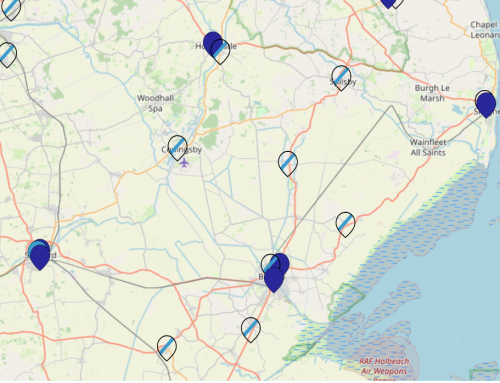1. Some supporters of selection comparisons selective local authorities with others which do not have selective schools. These have to be treated with caution as they may not take into account cross borough movement. A parliamentary answer reported that a quarter of pupils in grammar schools are pupils who come from outside that local authority area (i). Many ‘comprehensive’ local authorities will lose some of their more able pupils to selective schools in neighbouring local authorities. In November 2013 researchers for the Sutton Trust commented that stand alone grammar schools often drew in from a wide geographical area beyond their local authority, for example two thirds of students in grammars in Stoke on Trent and Kingston upon Thames live in a different local authority (ii). There is more evidence of this in ‘Selection is not a minor issue’.
2. A Government Statistical Bulletin published in showed that all selective local authorities have inflows of pupils from primary schools in other local authorities, with the highest 4 local authorities having inflows of over 60% of their year 7 grammar school intake. It reported that on average selective local authorities gain above average attaining pupils in year 7 and lose low attaining pupils (iii). As a result the non-selective schools (which may be listed as secondary moderns) in these selective authorities could have a pupil mix which may be similar to the ‘creamed’ comprehensives in the neighbouring local authority.
3. Using national pupil data Coe considered that as there was such a lot of movement across local authority boundaries comparisons of local authorities are not meaningful(iv). However Chris Cook when at the Financial Times did a more accurate comparison (v). He compared fully selective areas with the rest of the country and showed that in these areas poor children did significantly worse at GSCE. He found that ‘the net effect of grammar schools is to disadvantage poor children and help the rich’.
4. Atkinson, Gregg and McConnell compared selective and non selective local authorities. They found that the net effect of selection ‘is not substantive’ but that by comparing pupils with similar results at KS2 (the few) selected showed gains of a grade over 4 GCSEs and slight disadvantage for those not selected (the majority). However they found able children eligible for free school meals were unlikely to get into selective schools (vi).
5. Jesson looked at selective and non-selective local authorities and found that where schools in an area are organised on selective lines (as in 15 of the 152 local authorities) the overall impact is to depress the educational performance of these communities as a whole. He wrote ‘A government committed to raising standards for all must not exclude from its agenda those currently educated in ‘secondary modern’ schools – these pupils are currently seriously disadvantaged in GCSE performance by the way that their schooling system operates. Maintaining that disadvantage should not be an option’ (vii).
6. The 164 (now 163) grammar schools across England were officially designated as such, as a result of regulations arising from the School Standards and Framework Act which define grammar schools as selective, although this is changing as some will be denoted as academies. This designation was necessary in order to produce regulations about balloting. However other schools are not defined in this way and so their official status may not reflect their intake. For example 2010 statistics from the DfE listed 164 schools as grammars and only 160 as secondary moderns (viii). So any comparisons of achievements of ‘secondary moderns’ and ‘comprehensives’ should be treated with caution as many schools are not officially designated as secondary modern schools although they may be strongly affected by selection. In reality comprehensive schools cannot be really comprehensives if they are in the same area as selective schools.
7. Anyone hoping for irrefutable evidence in the UK that selection results in higher standards will be disappointed. When ballots to end selection were introduced Crook, Power and Whitty looked at the evidence and concluded that research did not really support either side of the argument (ix). The effects of prior attainment and background have to be taken into account. Importantly little research seems to have looked at the wider aspects of the effects of selection such as motivation and self esteem. Research has shown that schools which have a reasonable academic balance of ability in their intakes do better (x).
8. Coe reviewed much of the research (xi). He found that pupils in grammars did little better than similar pupils in other schools; a difference somewhere between zero and ¾ of a GCSE grade. However Allen (xii) reported that the child who ‘just passes’ into grammar school does worse at GCSE than their ‘just failing’ primary school peer at a state non-selective school
9. Coe’s review also supported previous research which showed that selective schools seem to select pupils already making faster progress at primary schools. Between KS2 to KS3 selective schools do slightly better than comprehensives on value added comparisons. It has been suggested that the reason for this is that selective entry test will have selected the more able children from those achieving the same level and that if the focus in selective areas have been on the 11plus rather than KS2 the KS2 results will not have been as high as they might have been so progress appears faster. An OFSTED report on Kent (xiii)(a wholly selective LEA) in January 2003 found that both at KS1 and KS2 results at primary schools were lower than similar local authorities.
10. In June 2013 Ofsted reported concern that the most able students were not doing as well as they should in non selective schools (xiv). Ofsted in March 2015 reported that this concern remained although there were examples of good practice (xv). In both reports there were recommendations for change but in neither report was selection at 11 into selective schools recommended as a solution. There was criticism of statistical methods in that expected progress of child to be linear is wrong. Education Datalab (xvi) observed that only 45% of learners make the expected linear progress between KS2 and KS3 and just 33% do so between KS3 and KS4. Also Stewart reported (xvii) that focusing simply on level 5 did not give an accurate picture – this “more able” grouping actually covers a wide range of ability. Ofsted’s Raise Online reveals that 80% of pupils achieving 5a in Maths at age 11 go on to achieve an A or A* in Maths at GCSE. However only 26% of those arriving with a 5c make that achievement. Coe’s report also seems to illustrate this. He said Although these analyses indicate that grammar school pupils appear to make greater progress from KS2 to KS4 than other pupils, we also find that these same pupils were already making more progress from KS1 to KS2 (ie in their primary school). This suggests that there may be important but unmeasured differences between grammar and non-grammar school pupils and somewhat undermines our confidence in these estimates of a ‘grammar school effect’ .(xviii)
11. There have also been comments that Ofsted inspections do not take into account prior attainment sufficiently so give grammar schools better outcomes than they should (xix).
12. In comparing selective schools and non selective schools at A level it should be noted that another level of selection seems to operate for entry into the sixth form: the proportions eligible for free school meals in the sixth forms of grammar schools is even lower than that for grammar pupils aged 11 – 15 (xx) .
13. Some supporters of selection call Northern Ireland in evidence, but it shows the stark divisiveness of selective systems. Some years ago comparisons of comprehensive Scotland with Northern Ireland illustrate the wide gap in achievement. Government statistics showed that of all people of working age the percentage of people with no qualifications in Northern Ireland was 22.6% while in Scotland it was 12.9%. Similarly the percentage of people with qualifications levels 4 -6 ie degree level in Northern Ireland was 18.1% in Scotland was 25.4% (xxi).
14. A study of the long term effects of a shift to comprehensive education in Scotland found there had been a rise in attainment and a reduction in social segregation in schools (xxii). It said ‘Scotland’s young people are better educated today than their parents or grandparents were at the same age’.
Refs
i Nick Gibb MP (8 March 2012) Schools: Admissions, House of Commons Parliamentary Answer to Lisa Nandy MP
ii Cribb, J, Sibieta, L, Vignoles, A, Skipp A, Sadro F and Jesson D. (2013) Poor Grammar: Entry into Grammar Schools for disadvantaged pupils in England. Sutton Trust
iii DCSF (2008) The Composition of Schools in England,http://www.education.gov.uk/rsgateway/DB/SBU/b000796/index.shtml
iv Coe R, Jones K, Searle J, Kokotsaki D, Kosnin A.M, Skinner,P. (2008) Evidence of the effect of selective educational systems CEM Centre Durham University, Sutton Trust
v Chris Cook() http://blogs.ft.com/ftdata/2013/01/28/grammar-school-myths/
vi Atkinson,A. Gregg,P and McConnell,B. (2006) The result of 11+ Selection: An Investigation into Opportunities and Outcomes for Pupils in Selective LEAs, CMPO Bristol
vii Jesson,D (2006) Performance of pupils and schools in selective and non-selective local authorities Centre for Performance Evaluation, University of York in in Hewlett, M, Pring,R and Tulloch M (2006) Comprehensive Education:evolution, achievement and new directions, University of Northampton Press:.
viii DfE (2011).The Education and Training Statistics for the UK 2010
ix Crook,D, Power,S and Whitty,G (1999) The Grammar School Question, Pespectives on Education Policy. Institute of Education, London
x Thrupp, M (1997) The school mix effect in Mortimore, P(1998) The Road to Improvement:reflections on school effectiveness, Institute of Education London
xi Coe R, Jones K, Searle J, Kokotsaki D, Kosnin A. M, Skinner, P (2008) Evidence of the effect of selective educational systems. Sutton Trust CEM Centre Durham University.
xii Allen R, (2015) Seven things you might not know about our schools. Education Datalab
http://www.educationdatalab.org.uk/Blog/March-2015/Seven-things-you-might-not-know-about-our-schools.aspx#.VkNfxb-t5Vc
xiii OFSTED (2003) Kent Local Education Authority.
xiv OFSTED (2013) The most able students: examining failure to achieve. https://www.gov.uk/government/publications/are-the-most-able-students-doing-as-well-as-they-should-in-our-secondary-schools
xv OFSTED (2015) The most able students: an update on progress since June 2013
https://www.gov.uk/government/publications/the-most-able-students-an-update-on-progress-since-june-2013
xvi Allen R, (2015) Seven things you might not know about our schools. Education Datalab
http://www.educationdatalab.org.uk/Blog/March-2015/Seven-things-you-might-not-know-about-our-schools.aspx#.VkNfxb-t5Vc
xvii Stewart H (2015) Talented pupils. Local Schools Network,
http://www.localschoolsnetwork.org.uk/2015/03/talented-pupils-schools-to-learn-from/#sthash.AOOILcf1.dpuf
xviii Coe, R, Jones K, Searle, J, Kokotsaki D, Kosnin A.M, Skinner P.( 2008) Evidence on the effects of selective educational systems. Sutton Trust
xix Stewart. W (2014) Are Ofsted judging schools fairly? Times Educational Supplement
http://www.tes.co.uk/article.aspx?storycode=6440390
xx Nick Gibb MP (7 March 2012) Schools: Admissions, House of Commons Parliamentary Answer to Lisa Nandy MP
xxi DfES (2006) Level of Highest Qualification held by people of working people age in each UK country.
xxii Murphy, D, Croxford, C, Howieson, C and Raffe, D (2015) Everyone’s Future – lessons from fifty years of Scottish comprehensive schooling. IOE Press.





